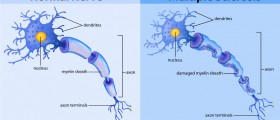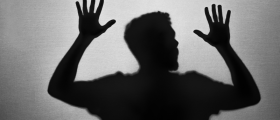Nervous breakdown is a common and wide social term that includes the various mental illnesses and typical states for breakdown, such as chronic panic disorder. A panic attack means a strong fear, and it starts with a fast breathing level and fast heart rate. These attacks may happen at any time and are not necessarily triggered by certain events and real-life causes, this is why these are hard to evaluate and signify a general anxiety state of the mind.
A 1996 US study about the frequency of nervous breakdowns recorded relationship problems, marital strain, separation, and other similar types of relationship problems causing 24% of nervous breakdowns. Problems at work or school summed up 17% of cases, and financial problems about 11%. In the United States, health problems have leveled down the importance as a contributor to nervous breakdowns. Evaluating the frequency of disorder through time, it recorded 28% of nervous breakdowns in the year 1957, 12% in 1976, and about 5.6% in the year 1996.

Acute psychological or emotional collapse is a clinical term for a nervous breakdown. One in three Americans suffered a nervous breakdown at some point in life. The nervous breakdown patient behaves normally at first sight but suffers nervousness and uncontrollable sorrow. The condition usually occurs due to tremendous pressure, mental, emotional, or physical overload, and inability to function at normal levels. It is a state of mind (mental disorder) when a metaphoric problem becomes too large in a person's mind.
But the depressive state may look like and have just like symptoms as a nervous breakdown. Various dramatic life circumstances that may cause harm may inflict nervous breakdown. Circumstances such as large bank debt, death in the family, job loss, bad relationships, overstressed jobs, or post-traumatic stress disorder. And other medical factors may cause breakdown as well. Factors such as bipolar episodes, schizophrenia, other severe psychological family history, alcohol abuse, drug abuse, etc.
Symptoms of Nervous Breakdown
They include appetite loss, insomnia, mental instability, depression, anxiety, nightmares, amnesia, delirium, extreme narcissism, extreme vanity, extreme self-love, disorientation, confusion, loss of self-confidence, and loss of self-esteem.Nervous breakdowns do not include any kind of catatonic state, decreased loss of interest in activities, a fast heartbeat, too much sweating, over tenseness of muscles, large panic attack, self-harm state
Prevention
Recognizing nervous breakdown signs and asking for psychological aid is the first thing to do. Frequent mood swings increase the level of stress. There are certain prevention that anyone can take if the stress level is high and nervous breakdown is recognized.
You can try the diet, meditation, healthy sleep, proper exercise, using no drugs, no alcohol, no smoking, aromatherapy, positive thinking, an effort to decrease the rate of breathing
Medical treatment for nervous breakdown includes counseling or talk therapy, psychotherapy, the use of psychotropic medications, and the use of tranquilizers and anti-depressants.
- As one example of self-help strategies, Mayes recently described how her various methods of self-care took her mind away from her problems, increased her self-esteem, and made her feel hope and optimism. In a narrative review, including 20 qualitative studies, Lucock et al. (2011) found that people used a wide range of self-help strategies in their everyday struggle to cope with their mental health symptoms. Creative activity, physical exercise, healthy living, structured routine and spirituality were all perceived as helpful.
- The study took place at a Norwegian CMHC that provides mental health services to four communities, covering a population of about 34?000 inhabitants. The CMHC has out-patient clinics, outreach teams doing home visits and two in-patient units for adults in addition to child and adolescent mental health services.
- Treatment at the outpatient clinic most often involves regular meetings with a health professional (psychologist, psychiatrist, mental health nurse, occupational therapist or social worker) in their office over a period of time. Most often, the first meetings are used to explore the service users problems, later the service user and the health professional work together to find solutions to the problems by means of specific psychotherapeutic approach, medications and counselling with regard to practical issues and life style changes.
- Ten participants were recruited by their health professional at the CMHC at their first consultation. All participants provided written informed consent. The study was approved by the Norwegian Social Science Data Services.
- Participants described a variety of helpful strategies and environmental supports. Four relevant main themes were identified: helpful activities, helpful people and places, self-instruction and learning about mental problems and medication and self-medication.

















Your thoughts on this
Loading...